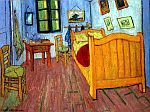A too-popularized mysticism can parody suffering and dismiss its very ontological reality. This is the fine paradox risked by Eastern thought. Occasionally, it reaches virtual sleight of hand, as in Paramahansa Yogananda’s reconciling of suffering and evil with God. He insists that suffering is mere “divine play” of a dream-spinning God, just God’s “cosmic entertainment.” He advises those who suffer, those who live (all of us): “Watch yourself from the balcony of introspection.” We know that a truth lies at the core of this advice, but it is expressed in a flippant way that is more irritating than enlightening. Can we toss off easy nostrums to those who suffer violence, hunger, disease, or other human degradation? Does this nostrum address sorrow or unhappiness at the cruel twists of fate — especially at the hands of others?
We need to fully experience sorrow and suffering in order to credibly transcend it. But even then, we are not transcending something so much as enlightening ourselves, so that the source of sorrow, the memory of experience, does not go away but is understood and appreciated as a clue into the nature of reality. It may be that we resent that witness watching from the balcony as we grope, cringe, struggle, and sob. Yes, we will have to pick ourselves up in order to carry on. But we will also want to tell that witness on the balcony to come downstairs and join the living.



